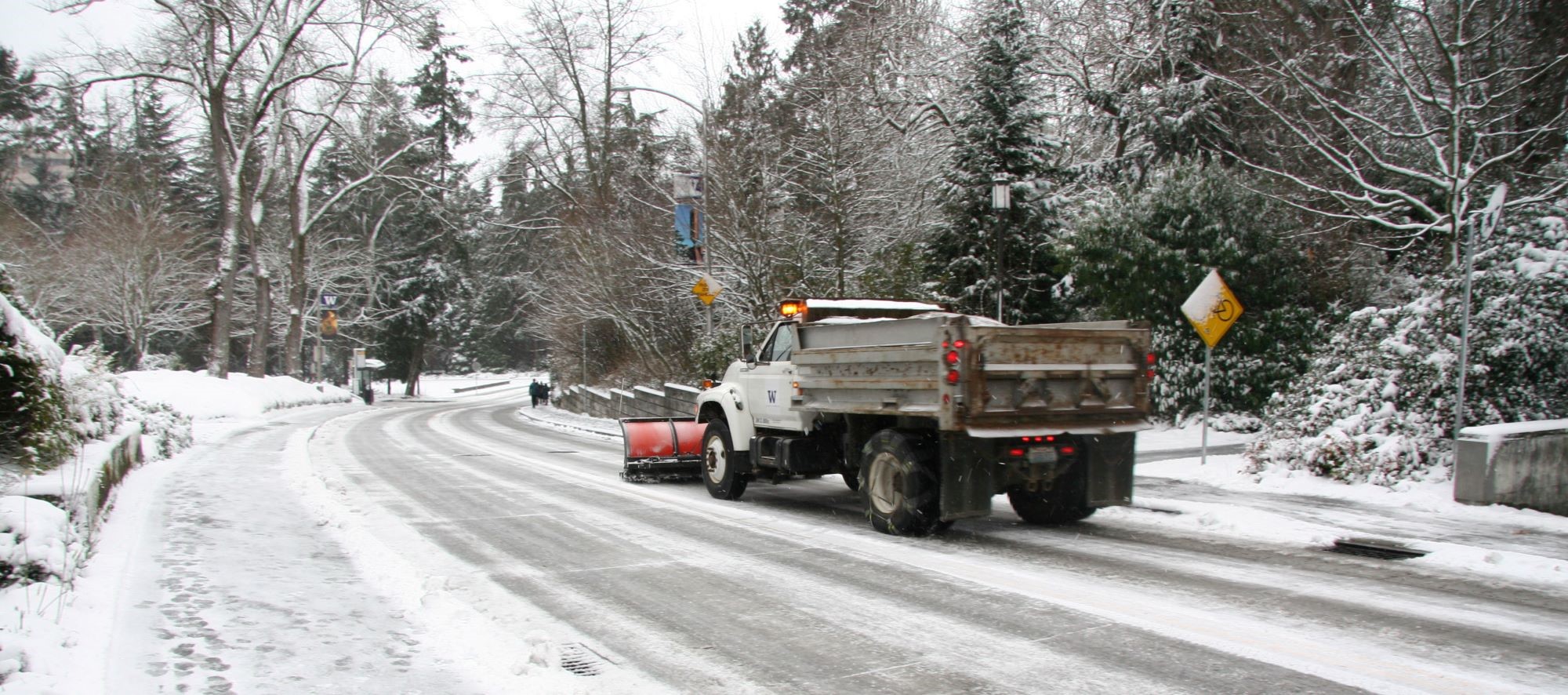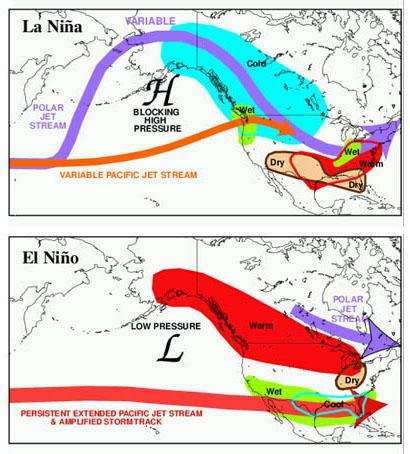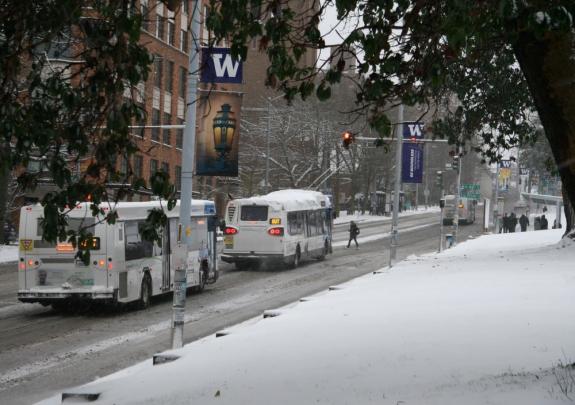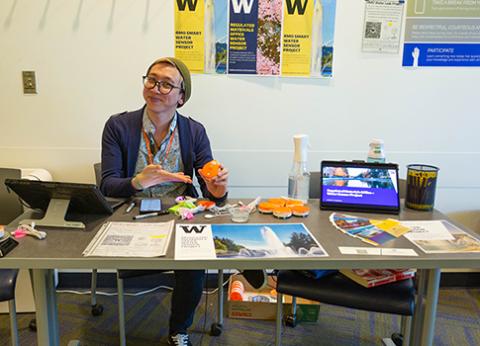Winter 2021-22: a whopper or a whimper?

Climate change has delivered hotter heat waves, colder snow storms and generally, weather fluctuations more frequent and extreme. So go ahead and tuck a pair of sunglasses into your snow boots and start getting ready with these tips for moving around safely this winter.
The Office of the Washington State Climatologist recently issued a “La Niña Advisory” for this year. This means winter temperatures will be warmer than usual in the South and cooler than normal in the Northern U.S. and Canada. The Pacific Northwest, the Tennessee and Ohio Valley areas and parts of the Midwest typically see more rain and snow than average in a La Niña phenomenon.
So, while we here at Facilities stock up on de-icer and rehearse snow removal plans, help us out by preparing for how your journey around campus may be affected by wild weather.
Start by making sure you’ve signed up for UW Alerts to stay informed about any disruptions to normal University operations. The UW Emergency Management website is a great resource for general winter storm preparedness and the Seattle Department of Transportation also has a good winter resources page.
On campus
On campus
Walkways and stairwells can become slippery during inclement weather. Please give yourself extra time to get where you’re going. In the event of snow on the Seattle campus, Facilities staff maintain a Snow Removal Progress map, where you can see the status of specific campus roads, sidewalks and parking lots. Conditions can change quickly, however, so you should always use your best judgment as well.
Observe boundaries and restricted areas. Do not attempt to cross areas of campus where caution tape, barricades or signage has been posted as these areas may be notably slippery and dangerous.
Follow these tips from UW Environmental Health & Safety:
- Wear footwear with good traction and insulation. Avoid boots and shoes with smooth soles and heels. Consider using snow/ice grippers (such as Yaktrax) for your shoes.
- Assume that wet, dark pavement areas may be slippery or icy.
- Take shorter steps and walk at a slower pace.
- Hold onto handrails when using stairs.
- Do not do anything distracting while walking (such as using a phone).
- Take special care when stepping in and out of vehicles.
- Use extreme caution when stepping off curbs and walking up steep slopes.
- Keep your hands free to catch yourself if you fall.
Transit and shuttles
Transit and shuttles
During inclement weather, transit agencies will often operate on snow routes and schedules. Familiarize yourself ahead of time with these plans and sign up for alerts for your route so you know when and if your bus is on a snow route and/or is running late.
Get started by going to the alerts page for your transit agency:
Transportation Services works hard to maintain shuttle service even during inclement weather, but staffing and safety conditions may affect routes and schedule times. Impacted shuttle services will be communicated on the Transportation Services website as information develops.
Follow our UW Shuttles Twitter page for rider alerts and subscribe to alerts for our most common routes:
Driving and parking
Driving and parking
Be mindful of ice (especially black ice), rain, fog, leaves, debris, oil, wet roadways and other slippery road conditions. As you travel through campus, turn on your headlights in low visibility and keep a special eye out for pedestrians and bicyclists as well as other vehicles. Slow down and allow yourself more time to get to your next location.
Parking lots and garages can become especially slick during winter. It is important to use extreme caution when driving in lots and garages. In severe weather conditions, only certain levels of some UW lots and garages may be open as Transportation Services teams prioritize re-opening facilities across campus. If top levels of garages are closed, please observe this restriction.
The status of major parking lots and garages will be communicated on the Transportation Services website as well as on the Snow Removal Progress map as information becomes available. Conditions can change quickly, however, so you should always use your best judgment as well.
For additional winter driving safety tips, visit the Washington State Department of Transportation.






